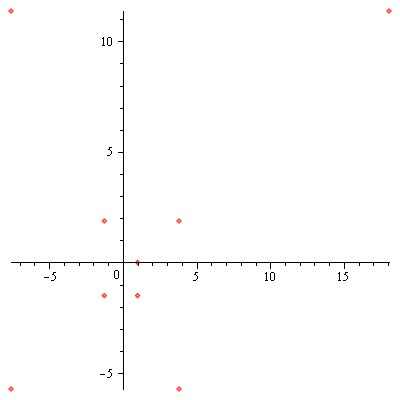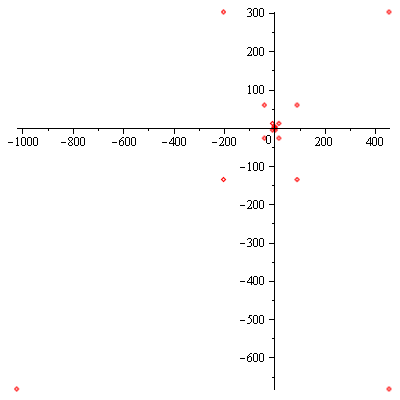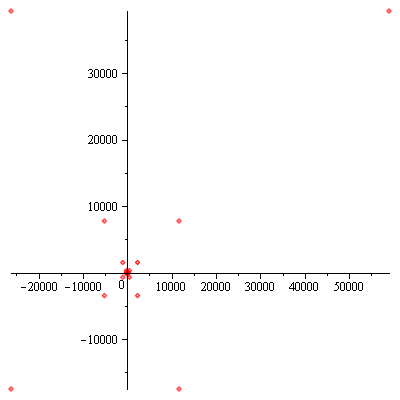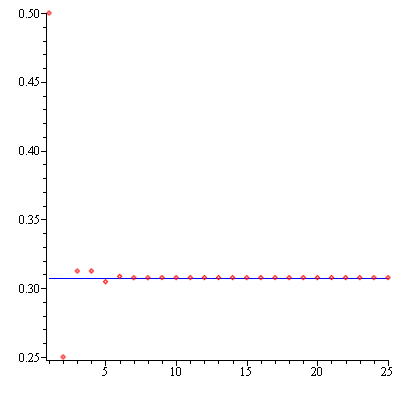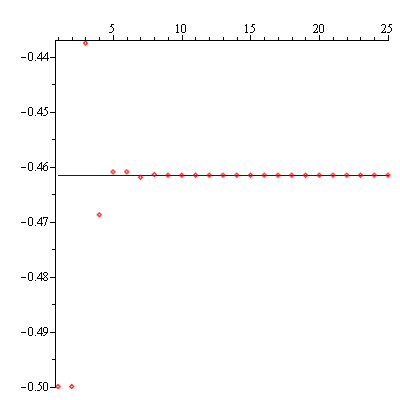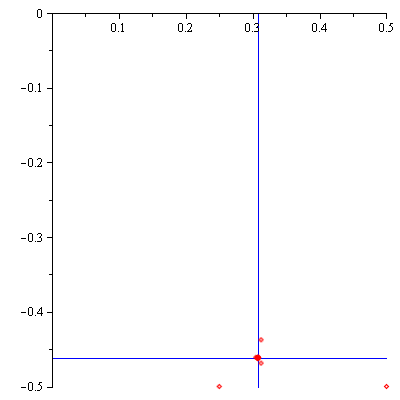Let $p\geq 1$ be a fixed number and let
$$\ell^p=\left\{x=(\xi_j): \sum_{j=1}^\infty|\xi_j|^p<\infty\right\}.$$
Define $d:\ell^p\times\ell^p\longrightarrow\mathbb{R}^+\cup\{0\}$ by
$$d(x,y)=\left(\sum_{j=1}^\infty|\xi_j-\eta_j|^p\right)^{\frac{1}{p}}.$$
Then $(\ell^p,d)$ is a metric space. The properties (M1) and (M2) are clearly satisfied. We prove the remaining property (M3) the triangle inequality. $p=1$ case can be easily shown by the triangle inequality of numbers. We need a few steps to do this. First we prove the following inequality: $\forall\alpha>0,\beta>0$,
$$\alpha\beta\leq\frac{\alpha^p}{p}+\frac{\beta^q}{q},$$
where $p>1$ and $\frac{1}{p}+\frac{1}{q}=1$. The numbers $p$ and $q$ are called conjugate exponents. It follows from $\frac{1}{p}+\frac{1}{q}=1$ that $(p-1)(q-1)=1$ i.e. $\frac{1}{p-1}=q-1$. If we let $u=t^{p-1}$ then $t=u^{\frac{1}{p-1}}=u^{q-1}$. By comparing areas, we obtain
$$\alpha\beta\leq\int_0^{\alpha}t^{p-1}dt+\int_0^{\beta}u^{q-1}du=\frac{\alpha^p}{p}+\frac{\beta^q}{q}.$$
Next, using this inequality we prove the Hölder inequality
$$\sum_{j=1}^\infty|\xi_j\eta_j|\leq\left(\sum_{k=1}^\infty|\xi_k|^p\right)^{\frac{1}{p}}\left(\sum_{m=1}^\infty|\eta_m|^q\right)^{\frac{1}{q}}$$
where $p>1$ and $\frac{1}{p}+\frac{1}{q}=1$. When $p=2$ and $q=2$, we obtain the well-known Cauchy-Schwarz inequality.
Proof. Let $(\tilde\xi_j)$ and $(\tilde\eta_j)$ be two sequences such that
$$\sum_{j=1}^\infty|\tilde\xi_j|^p=1,\ \sum_{j=1}^\infty|\tilde\eta_j|^q=1.$$
Let $\alpha=|\tilde\xi_j|$ and $\beta=|\tilde\eta_j|$. Then by the inequality we proved previously,
$$|\tilde\xi_j\tilde\eta_j|\leq\frac{|\tilde\xi_j|^p}{p}+\frac{|\tilde\eta_j|^q}{q}$$
and so we obtain
$$\sum_{j=1}^\infty|\tilde\xi_j\tilde\eta_j|\leq\sum_{j=1}^\infty\frac{|\tilde\xi_j|^p}{p}+\sum_{j=1}^\infty\frac{|\tilde\eta_j|^q}{q}=1.$$
Now take any nonzero $x=(\xi_j)\in\ell^p$, $y=(\eta_j)\in\ell^q$. Setting
$$\tilde\xi_j=\frac{\xi_j}{\left(\displaystyle\sum_{k=1}^\infty|\xi_k|^p\right)^{\frac{1}{p}}},\ \tilde\eta_j=\frac{\eta_j}{\left(\displaystyle\sum_{m=1}^\infty|\eta_m|^q\right)^{\frac{1}{q}}}$$
results in the Hölder inequality.
Next, we prove the Minkowski inequality
$$\left(\sum_{j=1}^\infty|\xi_j+\eta_j|^p\right)^{\frac{1}{p}}\leq\left(\sum_{k=1}^\infty|\xi_k|^p\right)^{\frac{1}{p}}+\left(\sum_{m=1}^\infty|\eta_m|^p\right)^{\frac{1}{p}}$$
where $x=(\xi_j)\,y=(\eta_j)\in\ell^p$ and $p\geq 1$. $p=1$ case comes from the triangle inequality for numbers. Let $p>1$. Then
\begin{align*}
|\xi_j+\eta_j|^p&=|\xi_j+\eta_j||\xi_j+\eta_j|^{p-1}\\
&\leq(|\xi_j|+|\eta_j|)|\xi_j+\eta_j|^{p-1}\ (\mbox{triangle inequality for numbers}).
\end{align*}
For a fixed $n$, we have
$$\sum_{j=1}^n|\xi_j+\eta_j|^p\leq\sum_{j=1}^n|\xi_j||\xi_j+\eta_j|^{p-1}+\sum_{j=1}^n|\eta_j||\xi_j+\eta_j|^{p-1}.$$
Using the Hölder inequality, we get the following inequality
\begin{align*}
\sum_{j=1}^n|\xi_j||\xi_j+\eta_j|^{p-1}&\leq \sum_{j=1}^\infty |\xi_j||\xi_j+\eta_j|^{p-1}\\
&\leq\left(\sum_{k=1}^\infty |\xi_k|^p\right)^{\frac{1}{p}}\left(\sum_{m=1}^\infty(|\xi_m+\eta_m|^{p-1})^q\right)^{\frac{1}{q}}\ (\mbox{Hölder})\\
&=\left(\sum_{k=1}^\infty|\xi_k|^p\right)^{\frac{1}{p}}\left(\sum_{m=1}^\infty|\xi_m+\eta_m|^p\right)^{\frac{1}{q}}.
\end{align*}
Similarly, we also get the inequality
$$\sum_{j=1}^n|\eta_j||\xi_j+\eta_j|^{p-1}\leq \left(\sum_{k=1}^\infty|\eta_k|^p\right)^{\frac{1}{p}}\left(\sum_{m=1}^\infty|\xi_m+\eta_m|^p\right)^{\frac{1}{q}}.$$
Combining these two inequalities, we get
$$\sum_{j=1}^n|\xi_j+\eta_j|^p\leq\left\{\left(\sum_{k=1}^\infty|\xi_k|^p\right)^{\frac{1}{p}}+\left(\sum_{k=1}^\infty|\eta_k|^p\right)^{\frac{1}{p}}\right\}\left(\sum_{m=1}^\infty|\xi_m+\eta_m|^p\right)^{\frac{1}{q}}$$
and by taking the limit $n\to \infty$ on the left hand side, we get
$$\sum_{j=1}^\infty|\xi_j+\eta_j|^p\leq\left\{\left(\sum_{k=1}^\infty|\xi_k|^p\right)^{\frac{1}{p}}+\left(\sum_{k=1}^\infty|\eta_k|^p\right)^{\frac{1}{p}}\right\}\left(\sum_{m=1}^\infty|\xi_m+\eta_m|^p\right)^{\frac{1}{q}}.$$
Finally, dividing this inequality by $\displaystyle\left(\sum_{m=1}^\infty|\xi_m+\eta_m|^p\right)^{\frac{1}{q}}$ results in the Minkowski inequality. The Minkowski inequality tells that
$$d(x,y)=\left(\sum_{j=1}^\infty|\xi_j-\eta_j|^p\right)^{\frac{1}{p}}<\infty$$
for $x,y\in\ell^p$. Let $x=(\xi_j), y=(\eta_j),\ z=(\zeta_j)\in\ell^p$. Then
\begin{align*}
d(x,y)&=\left(\sum_{j=1}^\infty|\xi_j-\eta_j|^p\right)^{\frac{1}{p}}\\
&\leq\left(\sum_{j=1}^\infty[|\xi_j-\zeta_j|+|\zeta_j-\eta_j|]^p\right)^{\frac{1}{p}}\\
&\leq\left(\sum_{j=1}^\infty|\xi_j-\zeta_j|^p\right)^{\frac{1}{p}}+\left(\sum_{j=1}^\infty|\zeta_j-\eta_j|^p\right)^{\frac{1}{p}}\\
&=d(x,z)+d(z,y).
\end{align*}The inequality that is second to the last expression is obtained by Minkowski inequality.
A measurable function $f$ on a closed interval $[a,b]$ is said to belong to $L^p$ if $\int_a^b|f(t)|^p dt<\infty$. $L^p$ is a vector space. For functions $f,g\in L^p$, we define
$$d(f,g)=\left\{\int_a^b|f(t)-g(t)|^pdt\right\}^{\frac{1}{p}}.$$
Then clearly (M2) symmetry is satisfied and one can also prove that (M3) triangle inequality holds. However, (M1) is not satisfied since what we have is that if $d(f,g)=0$ then $f=g$ a.e. (almost everywhere) i.e. the set $\{t\in[a,b]: f(t)\ne g(t)\}$ has measure $0$. It turns out that $=$ a.e. is an equivalence relation on $L^p$, so by considering $f\in L^p$ as its equivalence class $[f]$, $d$ can be defined as a metric on $L^p$ (actually the quotient space of $L^p$). Later, we will be particularly interested in the case when $p=2$ in which case $L^p$ as well as $\ell^p$ become Hilbert spaces. Those of you who want to know details about $L^p$ space are referred to
Real Analysis, H. L. Royden, 3rd Edition. Macmillan Publishing Company, 1988

